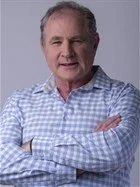
Top stories



Design solutions are about 'invented choice', unlike science which is about 'discovered truth'. The former deals with designing what does not yet exist, while scientists explain what is. Design will always be about speculation. There is no one right way to design a marketing strategy, even though it is executed in a world where gravity definitely equals 9.8 metres per second squared - every day of the week.
Finding the square root of 1750 is quite difficult without a calculator, but you can solve it. There is a specific answer. These types of problems are referred to as 'tame' problems, even though solving them can be complex. The traditional pattern of thinking that we tend to follow with tame problems gives us what the software industry has dubbed a Waterfall Model:

From Conklin J
However, marketing strategy despises this linear approach. So it is not uncommon for scientific institutions to develop a strategic plan over a year, as if more time will give the eventual 'correct answer'. Using the Waterfall approach is a linear method - although a useful template to employ for the presentation of your 'story' - it does not suit marketing strategy construction.
In a study done at the Microelectronics and Computer Technology Corporation, a group of designers (of integrated circuits) was asked to solve a complex elevator problem. Suffice to say - the Waterfall did not feature at all in the process - these designers began early on with possible solutions, and the step of understanding the problem persisted close to the very end.

From Conklin J
Being 'all over the place', is not a sign of defective thinking, but rather the core of a creative problem-solving process. These types of complex problems (which are the opposite of 'tame'), are referred to as 'wicked'. This term was coined by Horst Rittel, who proposed a number of characteristics for these problems, such as having no 'stopping rule': The problem-solving process ends when you run out of resources, such as time, money or energy - not when the 'right' answer emerges.
And not being 'right' is very difficult for someone dedicated to the discovery of truth, such as our scientists.
So, here are some handy tips for constructing marketing strategies:
References:
